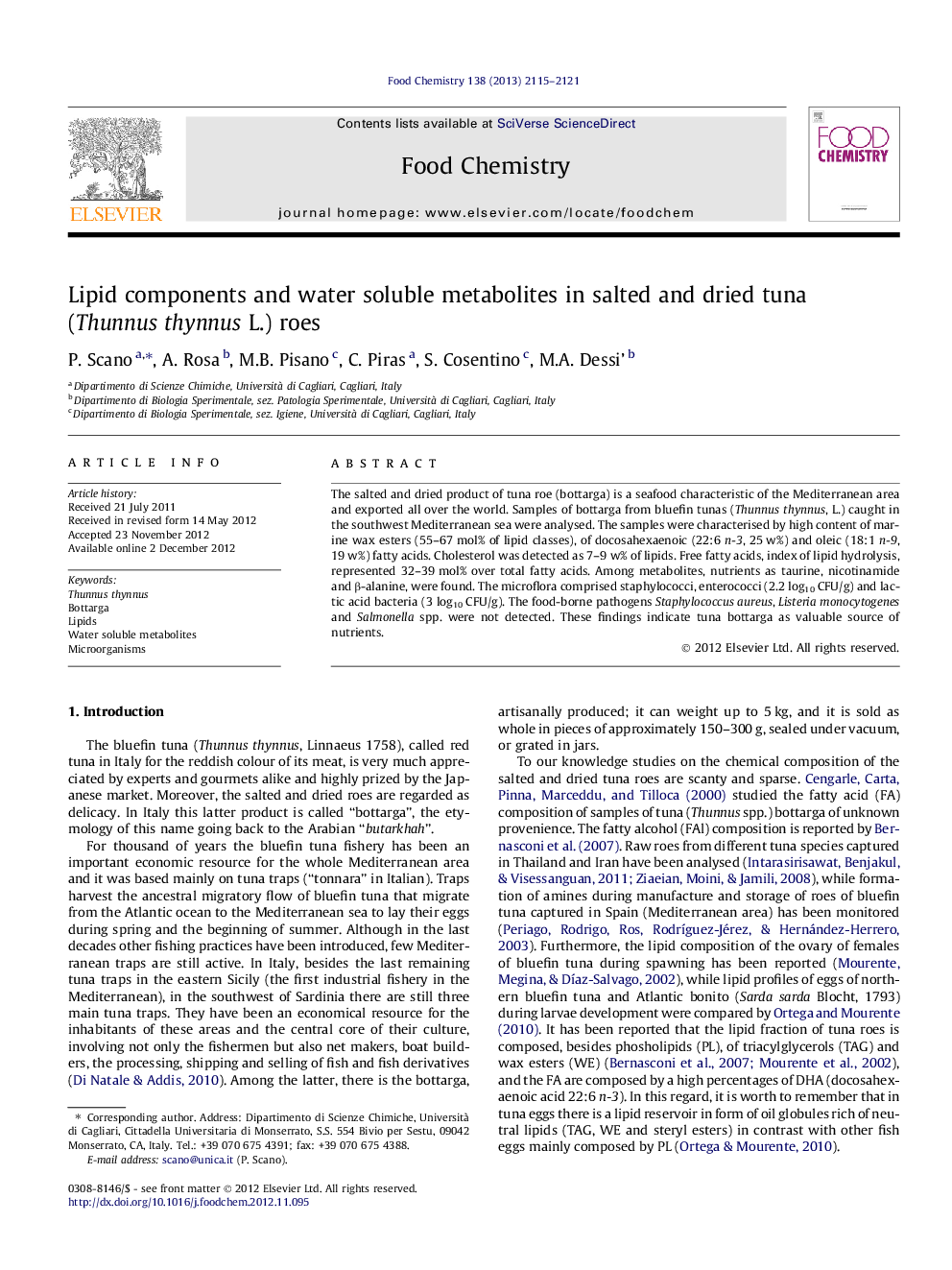| Article ID | Journal | Published Year | Pages | File Type |
|---|---|---|---|---|
| 1185492 | Food Chemistry | 2013 | 7 Pages |
The salted and dried product of tuna roe (bottarga) is a seafood characteristic of the Mediterranean area and exported all over the world. Samples of bottarga from bluefin tunas (Thunnus thynnus, L.) caught in the southwest Mediterranean sea were analysed. The samples were characterised by high content of marine wax esters (55–67 mol% of lipid classes), of docosahexaenoic (22:6 n-3, 25 w%) and oleic (18:1 n-9, 19 w%) fatty acids. Cholesterol was detected as 7–9 w% of lipids. Free fatty acids, index of lipid hydrolysis, represented 32–39 mol% over total fatty acids. Among metabolites, nutrients as taurine, nicotinamide and β-alanine, were found. The microflora comprised staphylococci, enterococci (2.2 log10 CFU/g) and lactic acid bacteria (3 log10 CFU/g). The food-borne pathogens Staphylococcus aureus, Listeria monocytogenes and Salmonella spp. were not detected. These findings indicate tuna bottarga as valuable source of nutrients.
► Tuna bottarga contains high level of docosahexaenoic acid (25% of fatty acids). ► In tuna bottarga cholesterol represents the 7–9% of lipids. ► Tuna bottarga contains high level of marine wax esters. ► Tuna bottarga contains nutrients as taurine. ► In tuna bottarga no food-borne pathogens were detected.
